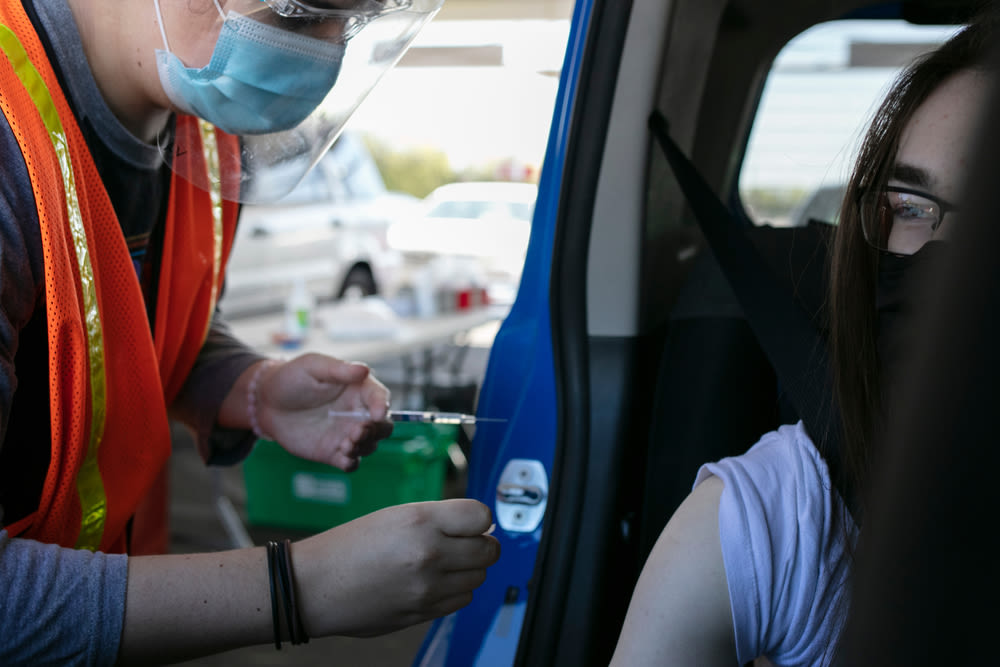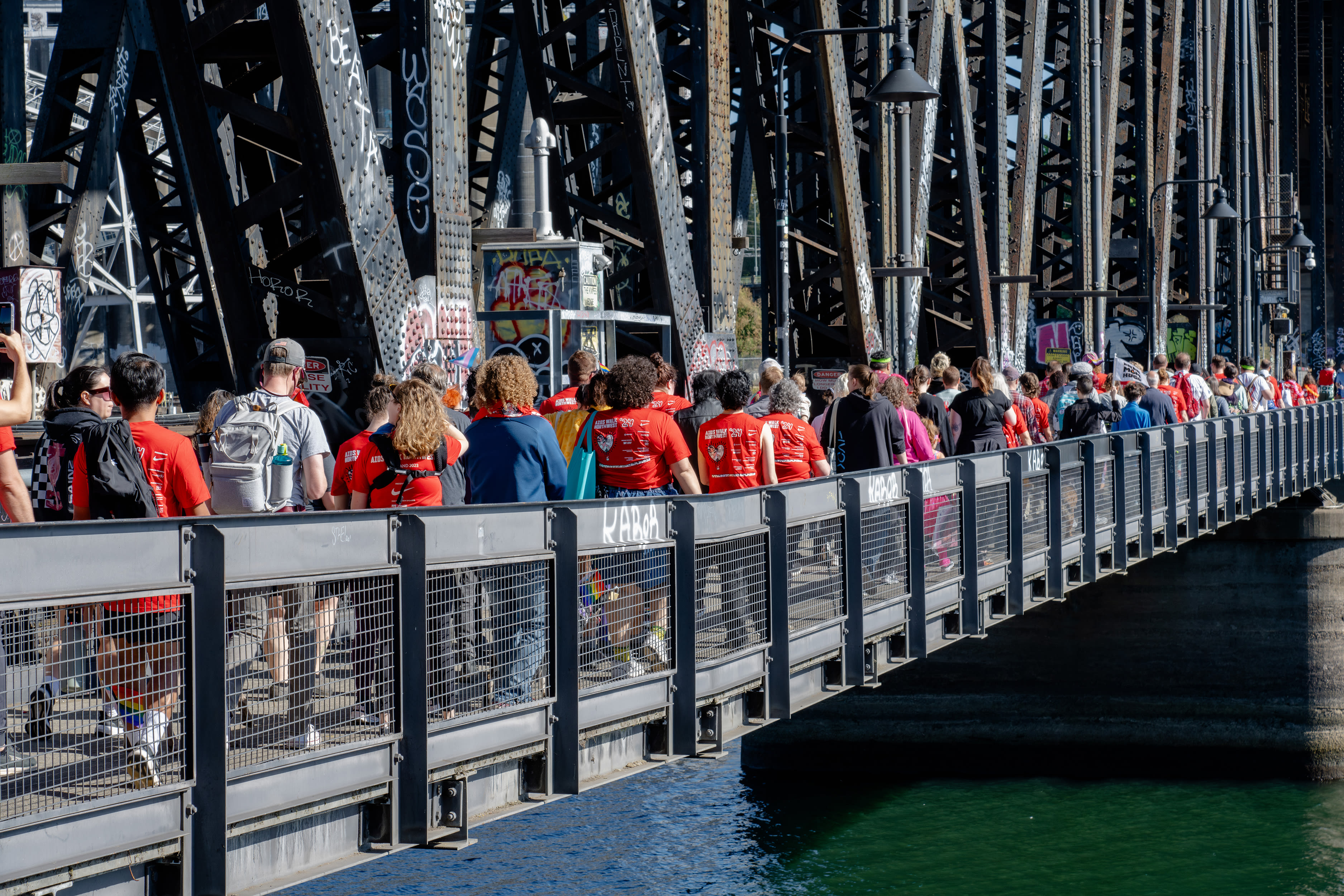The Vaccine Floodgates Are Open in Oregon

Getting an appointment for a vaccine at mass vaccination clinics, like the one pictured at the Portland airport, has gotten a whole lot easier in the past week.
Image: Xiao Zhou/Shutterstock
In a matter of weeks, COVID-19 vaccines have gone from a scarce, in-demand resource in Oregon to being freely available for the taking.
A cursory check of vaccine scheduling tools finds availability at almost any hour at the mass vaccination site at the Oregon Convention Center, as soon as this Wednesday; at pharmacies around the metro area, meanwhile, you can get a walk-in shot, no appointment needed. You can even shop around for the shot you want—maybe you’re in the mood for Pfizer today, or did you wake up on the Moderna side of the bed? (Meanwhile, in India.)
And yet. This sudden availability, which has been building for about a week, comes at a precarious time for Oregon: The state is close, but not yet at, the so-called “tipping point” at which other states and countries have begun to see rapid declines in new COVID infections. As of Monday, according to the Oregon Health Authority, 42.9 percent of Oregon had received at least a first dose of the vaccine. The percentage is higher in certain counties, including Multnomah, Hood River, and Benton Counties.
In Israel, which is leading the world in vaccinations, cases fell off when the country hit about 50 percent of adult vaccinations for at least their first dose. Now with 58 percent of the population vaccinated in a population of about 9.2 million, the country had just 47 new COVID cases on Monday, and has lifted its outdoor mask mandates for all.
In the US, a handful of states, mostly in the Northeast, have already given a first dose to at least 50 percent of their adult populations—New Hampshire, Massachusetts, Vermont, Connecticut, Maine. In each state, cases numbers have dropped between 37 and 46 percent over the last two weeks.
Vaccine uptake is higher among blue states that voted for President Joseph Biden, but among those Democratic-leaning states, Oregon is at the bottom of the pack, along with Nevada, Arizona, Michigan, and purple state Georgia. All the rest of those states are considered swing states; Oregon is not, making it an outlier among deep blue states. But the state does have a strong tradition of vaccine resistance among both the right and the left that could be hampering its progress. (Though even there, as the months have gone by, vaccine hesitancy among Oregonians has decreased since January, according to the U.S. Census Bureau’s Household Pulse survey.)
Statistics tracked by the Oregon Health Authority show that the seven day rolling average of vaccine uptake peaked on April 11 at a high of 43,021 doses administered that day in the state; the pause on the Johnson & Johnson vaccine contributed to the slowdown, but even the resumption of that shot didn’t push the numbers back up, and the seven day rolling average is now down to 28,252 doses administered.
One hopeful sign on the horizon: News broke Monday that ages 12-15 could be eligible to get the Pfizer vaccine as soon as next week, which would presumably boost the number of those willing to get their shots and help Oregon move more quickly to tipping point status.
In the meantime, week-over-week case numbers in Oregon have declined for six straight days in a row, suggesting that, even with vaccine rates in the low 40s, a worrisome spring uptick in cases may be waning. Hospitalizations remain higher than they were six weeks ago, but nowhere near the levels of the November-December peak, back before vaccines were widely available.




